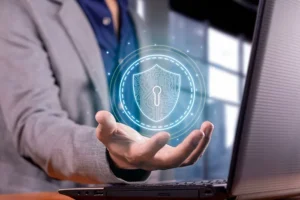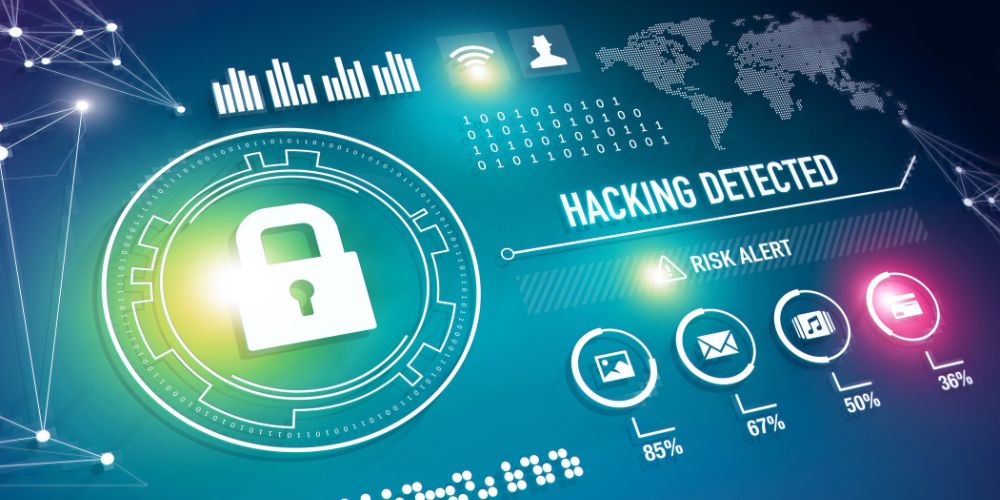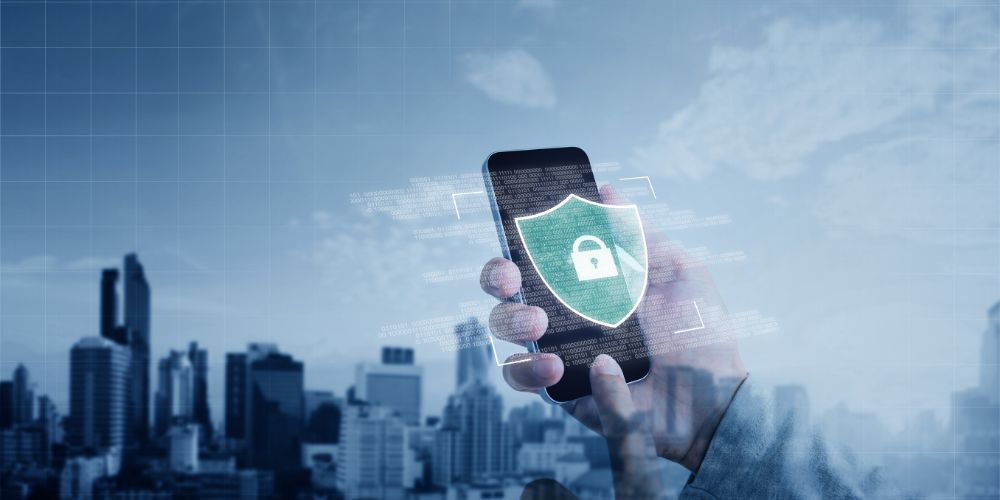
Cyber Security – A Guide To The Types Of Cyber Security Solutions

In today’s digital age, cyber security has become a vital concern for individuals and organisations alike. With the increasing reliance on technology and the internet, the threat of cyber-attacks has never been greater. But what is cyber security and why is it so important?
View Our IT Security Services
What Is Cyber Security?
Cyber security, also known as information security, is the practice of protecting your business’ computer systems, networks, and data from unauthorised access, use, disclosure, disruption, modification, or destruction. It encompasses a wide range of technologies, processes, and policies designed to safeguard against cyber threats such as hacking, phishing, malware, and other forms of cybercrime.
One of the main goals of cyber security is to protect sensitive information. This includes personal information and other financial data, as well as confidential business information such as trade secrets and intellectual property. Ensuring the integrity, availability, and confidentiality of this information is crucial for the protection of individuals, businesses, and national security.

Another important aspect of cyber security is protecting the availability of computer systems and networks. Downtime due to cyber-attacks can result in lost productivity and revenue for businesses, and can even cause critical infrastructure to fail. This highlights the importance of organizations having proper incident response plans and back up and disaster recovery measures in place to minimize the impact of a successful cyber-attack.
In addition to protecting against cyber threats, cyber security also involves compliance with legal and regulatory requirements. For example, companies handling personal and financial data are typically required to comply with industry-specific regulations.
So just how many types of cyber security solutions are there?
Common Types Of Cyber Security
Cybersecurity is an ever-evolving field that encompasses a wide range of technologies, processes, and policies. There are several different types of cybersecurity solutions that organizations can use to protect against cyber threats. Understanding the different types of cybersecurity is crucial for organizations to develop an effective defense strategy. Here are some of the most common types of cyber security:
1. Network security: This type of cyber security focuses on protecting an organisation’s network infrastructure, including routers, switches, and servers. Firewalls, intrusion detection and prevention systems (IDPS), and virtual private networks (VPNs) are common network security solutions.
2. Endpoint security: Here the focus is on protecting the devices used throughout the organisation and the data stored on them. This includes laptops, desktops, smartphones, and servers. Anti-virus and anti-malware software, encryption, and two-factor authentication (2FA) are common endpoint security measures. You can also use specialized applications that are dedicated to securing endpoint devices and protect against attacks such as keylogging and screen-capture.
3. Application security: This type of cyber security focuses on protecting an organisation’s software applications from vulnerabilities and attacks. This includes web applications, mobile applications, and cloud-based services. Secure coding, penetration testing, and runtime application self-protection (RASP) are common application security solutions.
4. Cloud security: As more and more organisations move their workloads to the cloud, this type of cyber security is becoming increasingly important. Cloud security solutions include encryption, key management, identity, and access management (IAM) and other security controls.
5. Information security: The aim is to protect an organisation’s sensitive information, including personal and financial data. This includes data classification, data loss prevention, and security information and event management (SIEM).
6. Identity and Access Management (IAM): This type of cyber security focuses on the management and protection of digital identities. It allows organisations to control access to resources, ensuring that only authorised users can access sensitive information.
7. Disaster recovery and business continuity planning: It’s critical that your organisation is able to prepare and recover in case of cyber-attacks, power failures, and other disruptions.
Download This Free Cyber Security Checklist
What Types Of Cyber Security Threats Are There?
Most of us know of the obvious ones like hackers or phishing but there are several other types of cyber security threats that you need to be aware of such as malware, ransomware, distributed denial of service (DDoS) attacks, Advanced persistent threats (APTs), social engineering and insider threats.
It’s worth noting that new types of threats are emerging continually as technology advances, and new ways to exploit them are found. So, it’s important for organizations to be vigilant and stay informed about the latest cyber threats and vulnerabilities.
Cyber Security Tools
Luckily there are many types of cyber security tools to help keep your system secure. Here are some common types of cybersecurity tools:
Firewalls: Network security systems that control incoming and outgoing network traffic.
Anti-virus/anti-malware software: Programs that detect and remove computer viruses, worms, and other malicious software.
Intrusion detection and prevention systems (IDPS): Solutions that detect and prevent unauthorized access to a computer or network.
Encryption: Tools that protect sensitive information from unauthorized access by converting plain text into code.
Virtual private networks (VPNs): Secure networks that allow remote users to securely connect to a private network.
Two-factor authentication (2FA): An additional layer of security that requires users to provide two forms of identification.
Security information and event management (SIEM): Tools that collect and analyze security-related data from multiple sources to identify potential threats.
Identity and access management (IAM): A measure to manage and protect digital identities, and control access to resources.
Penetration testing: Simulate an attack on a computer system or network to identify possible vulnerabilities.
Disaster recovery and business continuity planning: Prepare for and recover from cyber-attacks and other disruptions with good planning.
Web Application Firewall (WAF): These protect web applications from various types of attacks like SQL injection, cross-site scripting, and other threats.
Cloud security tools: Protect cloud-based data and applications from unauthorized access, configuration errors, and other threats.
Network monitoring and analysis tools: These tools continuously monitor network traffic and identify any suspicious activities, anomalies or intrusions.
Data Loss Prevention (DLP): Monitor data and endpoints, identify sensitive data, and prevent them from being leaked.
These are just a few examples of the many different types of cybersecurity tools available. It’s important for organisations to evaluate their specific security needs and choose the tools that best meet those needs.

Cyber Security Best Practices
It’s important to keep in mind that no single tool can provide complete protection from cyber threats, so a combination of different tools is often necessary with on-going pro-active cybersecurity management.
With so many potential threats and so many points that need protecting, where does a small business owner start? A free cyber security audit is a good place!
9spheres Technologies is a leader in cyber security and managed IT services in Brisbane. We start by auditing your existing infrastructure and operational practicalities to identify potential vulnerabilities. We’re an accredited partner of Sophos Cyber Security. Together with this leading cyber security tool and our team of cyber security experts, we can keep your business safe.
Give us a call on 07-3149-3447 or send through a contact form for more info.






